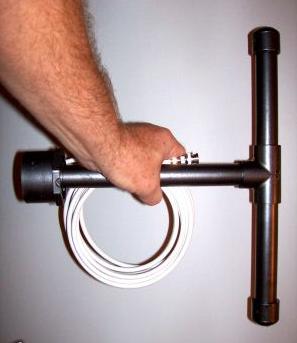hi abcd567
pls dont take my response as criticism - it was not intended, and yes agree that you have managed the situation
within the chosen parameters.
my comment was refering only to the aspect of trying to compensate for the signal loss thru walls, glas etc. using
amp gain.
in respect to the SDR reciever - you are correct in that it has poorer reciever characteristics as c/w with
the others you mention - i never claimed otherwise, however pls understand there is a differnece between gain (to which
i reffered) and the other parameters you mention. it is however a fact that the dongles have high gain ... and usually the gain needs to be below the max for optimum results. (eg in RTL1090 overide auto and set the gain to max ... and watch the range reduce)
and i have to respectfully disagree with your statement about noise .... noise comes from many "local" sources in and
around your home, in addition to "thermal noise" and noise internally generated within dongle. this can easily be seen by using dongle with
a sdr program as a reciever ... observe the noise floor - with NO antenna connected... and observe how the noise floor rises
as you increase the dongle gain.
im sure you or a neighboor has a microwave oven, CFL lights, fluorescent lights, low voltage lights, wall wart power supplies (switchmode) for mobile phones , PC, notebook, .. and so on. .. including dongle power supply noise, which can be partic bad when
powering dongle from PC USB source
all of these are "local " sources of noise... (wideband noise)
yes you are correct - cell phone towers and the like add noise also . (i am on the boresite of a local tower less than 70m away!)
the performance of the reciever is a function of many factors inc those you mention, and yes for an extremely modest
Rx cost, the dongles provide great value (and thats what im using), they have a high gain preamp etc but poorer specs
(compared with purpose built rx) in other areas.
pls dont take my response as criticism - it was not intended, and yes agree that you have managed the situation
within the chosen parameters.
my comment was refering only to the aspect of trying to compensate for the signal loss thru walls, glas etc. using
amp gain.
in respect to the SDR reciever - you are correct in that it has poorer reciever characteristics as c/w with
the others you mention - i never claimed otherwise, however pls understand there is a differnece between gain (to which
i reffered) and the other parameters you mention. it is however a fact that the dongles have high gain ... and usually the gain needs to be below the max for optimum results. (eg in RTL1090 overide auto and set the gain to max ... and watch the range reduce)
and i have to respectfully disagree with your statement about noise .... noise comes from many "local" sources in and
around your home, in addition to "thermal noise" and noise internally generated within dongle. this can easily be seen by using dongle with
a sdr program as a reciever ... observe the noise floor - with NO antenna connected... and observe how the noise floor rises
as you increase the dongle gain.
im sure you or a neighboor has a microwave oven, CFL lights, fluorescent lights, low voltage lights, wall wart power supplies (switchmode) for mobile phones , PC, notebook, .. and so on. .. including dongle power supply noise, which can be partic bad when
powering dongle from PC USB source
all of these are "local " sources of noise... (wideband noise)
yes you are correct - cell phone towers and the like add noise also . (i am on the boresite of a local tower less than 70m away!)
the performance of the reciever is a function of many factors inc those you mention, and yes for an extremely modest
Rx cost, the dongles provide great value (and thats what im using), they have a high gain preamp etc but poorer specs
(compared with purpose built rx) in other areas.





Comment